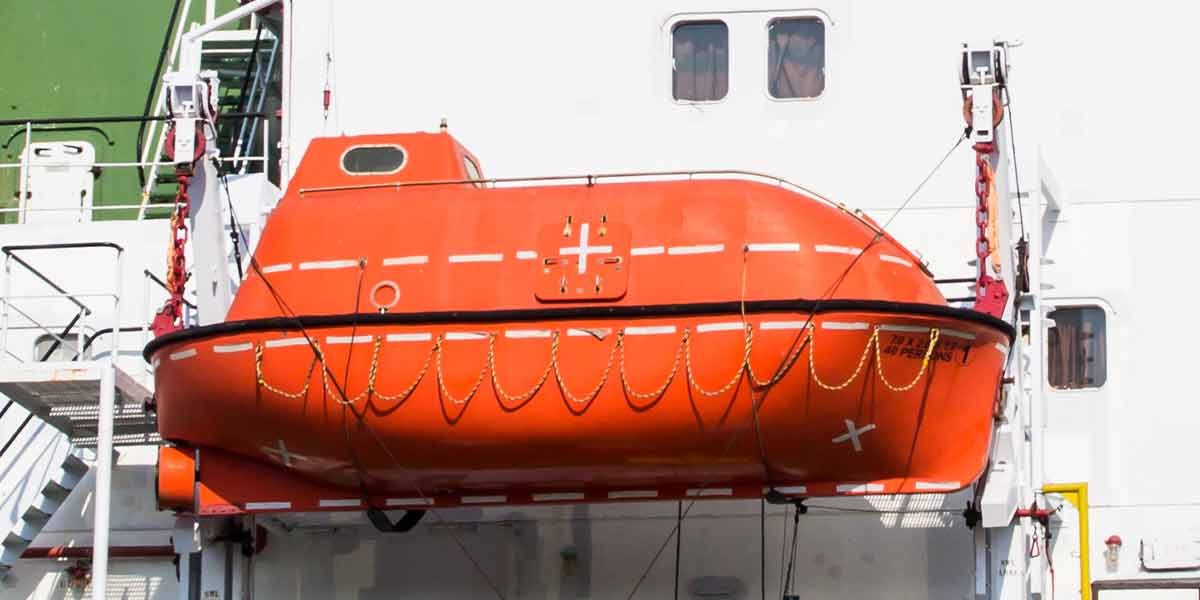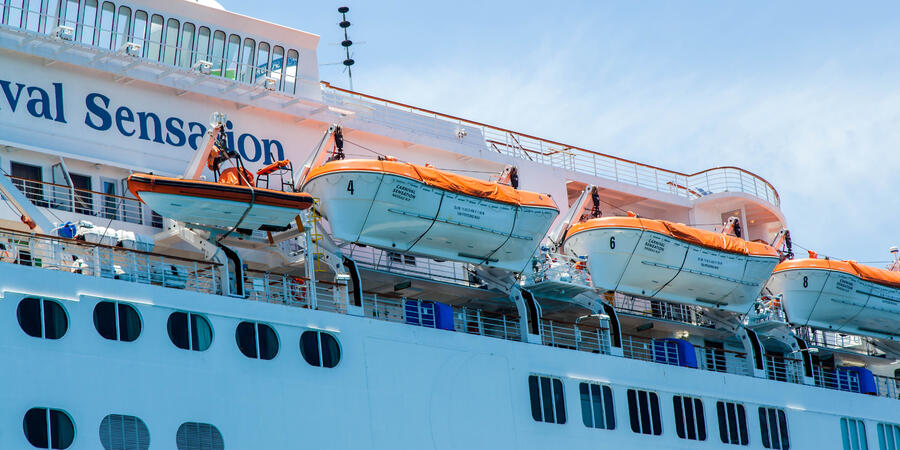Table Of Content

Lifeboat accidents still occur despite these improvements, highlighting the need for vigilance in safety procedures, training, and equipment maintenance. Cruise ship lifeboats are equipped with essential survival equipment and supplies to ensure the safety and well-being of passengers and crew members in an emergency. Ensuring the safety of passengers and crew members is a top priority on cruise ships. To achieve this goal, crew members undergo extensive training and regular practice in emergency procedures. Most cruise lines offer the safety drill via passenger TV for some time following the initial demonstration.
What Is a Cruise Ship Lifeboat?
Carnival cruise ship saves men from capsized cargo vessel - USA TODAY
Carnival cruise ship saves men from capsized cargo vessel.
Posted: Thu, 14 Dec 2023 08:00:00 GMT [source]
This position is perfect because it’s close to a lot of public indoor and outdoor activities and services, as well as the upper- and lower-deck cabins. Remember, a properly maintained lifeboat could be the difference between life and death for passengers and crew members alike. As part of the maintenance process, it’s important to engage qualified engineers who are experienced with lifeboat systems.
What’s the Typical Capacity of Cruise Ship Lifeboats?
Since then, other lines, such as Royal Caribbean and Costa Cruises, have painted their lifeboats yellow. They would encumber the decks, and rather add to the danger than detract from it. Often cruises ships are nowhere near full capacity even if every cabin is booked. The more space a cruise ship can free up the more money it can make by providing more cabins, entertainment or other sources of extra revenue on the ship. The more common 150-capacity lifeboats are usually 8.1m to 9.6m in length.
What can be found on a lifeboat?
To aid in propulsion, lifeboats can have oar locks for manual rowing, but many modern ones are equipped with motorized engines to move quickly in water when needed. The bright color is chosen to ensure high visibility even in rough seas and poor weather conditions, aiding rescuers in locating them from a distance. Additionally, the belief in the “unsinkable” nature of the ship contributed to the inadequate number of lifeboats.
For example, Royal Caribbean’s Wonder has passenger and crew capacities of 6,988 passengers and 2,300 crew for a total of 9288. Life rafts are reserved for the crew and may not offer the same level of comfort as lifeboats. While lifeboats are solid open boats that can hold up to 370 people, life rafts are inflatable and collapsible with a maximum capacity of 25 people.
Cruise ships have enough lifeboat capacity for 75% of the maximum capacity of people on board, crew, and passengers. Liferafts are provided for the remaining 25%, although often not required as a cruise ship is never even near it’s maximum capacity. Lifeboat drills and procedures play a crucial role in preparing passengers and crew members for emergencies. These drills familiarize individuals with the location of their assigned lifeboat stations, embarkation procedures, and emergency communication systems.
Lifeboats Today – Do They Have Enough Room For Everyone On Board
We also ensure that the number of lifejackets, lifeboats, and life rafts on each Carnival ship exceeds the number required, based on the ship’s maximum capacity for passengers and crew. It is worth noting that cruise ship operators adhere to stringent safety protocols and take every precaution to prevent emergencies from occurring. However, in the unlikely event that an emergency does arise, the availability of properly maintained lifeboats ensures the swift and efficient response necessary for the safety and protection of all onboard. Now that we have explored the types of lifeboats, let’s understand the safety features and equipment that make these vessels reliable and secure in emergency situations. With a clear understanding of the regulations and requirements, let’s explore the capacity and types of lifeboats commonly found on cruise ships. All lifeboats on cruise ships are usually around 7.3 meters or longer, with all seats able to support a 100 kg person (220lbs).
They are built to be completely stable even when filled to capacity, and they are able to be deployed while the ship is moving at a maximum speed of 5 knots. The lifeboat has four batteries onboard that power everything, including lights so that the lifeboat isn’t pitch black in the middle of the night. The driver’s seat on a lifeboat is up high and does require climbing up a lot of the seats. On some lifeboats, the driver’s seat area will stick up and out slightly.
How Big Are Lifeboats On Cruise Ships
Disney waited a decade to build its next new ship, but Disney dreamers had their wish granted in 2022. Designed to be the perfect complement to a visit to Orlando's Disney theme parks, these short cruises visit Nassau and Disney's private island, Castaway Cay. Historically, new ships are reserved for longer itineraries, so this is a fantastic opportunity to enjoy a snack-size sampling of a brand-new ship without spending the money on a longer sailing. Offering short cruises on its humongous Oasis Class ships is new for Royal Caribbean; sister ship Allure of the Seas will test out the concept before Utopia launches. From first-timers to veteran cruisers, anyone looking for a short but fun-filled hop to the Bahamas should give Freedom of the Seas a look. Families looking for a quick escape will find entertainment and activities for toddlers to teens.
Instead, every cabin is assigned an assembly station, where they will meet with crew members and be escorted to a lifeboat if an evacuation is deemed necessary. Passengers must attend a muster drill to identify their assembly station and learn about their ship's emergency procedures. You can rest assured that cruise lines have many safety systems in place in the rare instance that a major emergency occurs at sea. Among these systems are, of course, the brightly colored lifeboats that you'll see lining the sides of your ship. Not only are they there to carry passengers to safety if the ship needs to be abandoned, but they're also used as tender boats in a port where the ship can't dock at a pier. Now that we understand the importance of lifeboats and their usage in emergency situations, let’s explore the maintenance and inspections required to keep these vessels in optimal condition.

With the combined numbers of passengers and crew, the capacity of today’s modern cruise ships are often three or four times greater than that of the Titanic. Cruise ship lifeboats are vital safety measures designed to carry all passengers and crew in an emergency. These lifeboats are equipped with survival supplies, communication equipment, and engines to safely transport individuals from a distressed vessel. Cruise ships often conduct regular abandon-ship drills that involve the crew simulating an evacuation scenario. These drills are essential for maintaining the crew’s proficiency in handling lifeboats and ensuring that necessary equipment is in proper working order.
In addition, the crew undergoes extensive training to ensure that they know how to operate the lifeboats efficiently. They’re trained to handle any emergency situation that may arise and to ensure the safety of all passengers on board. As a lover of history, delving into the regulations surrounding life-saving equipment on board ships is a fascinating journey through time. The sinking incidents of the Titanic and other ships led to the creation of the International Convention for the Safety of Life at Sea (SOLAS) in 1914.
These items, along with the communication and signaling equipment, are crucial in ensuring the safety of passengers and crew during a ship emergency. Lifeboat requirements on cruise ships are of paramount importance when it comes to ensuring the safety and well-being of passengers and crew members. These requirements are governed by international regulations, such as SOLAS, which mandate that every cruise ship must have the appropriate number of lifeboats to accommodate all individuals on board. Regulations governing cruise ship lifeboats are established and enforced by international maritime bodies to ensure the highest level of safety for passengers and crew members. One of the key regulatory bodies is the International Maritime Organization (IMO), which has set out a range of safety standards under the International Convention for the Safety of Life at Sea (SOLAS).
This convention overhauled safety regulations on lifeboats and ensured that all ships had enough life-saving equipment on board. In addition to routine checks and inspections, crew members conduct regular lifeboat drills. These exercises familiarize the crew with lifeboat operations and provide an opportunity to identify and address any issues. You’d be glad to hear that lifeboats for cruise ships have advanced significantly and are now extremely well-designed in the extremely (very!!) unlikely case of an emergency.
In addition, the lifeboats and the wires that move them up and down must be strong enough to allow the lifeboat to be lowered at full capacity. As mentioned, lifeboats are frequently inspected to ensure they fully work. Life rafts contain high-pressure gas canisters that allow them to inflate automatically and quickly once deployed. The International Maritime Organization contains information on servicing, drilling, and maintaining all lifeboats. Weekly and monthly inspections are expected to be administered by the crew, with yearly or long-term inspections done by a representative of a lifeboat manufacturer. Modern lifeboats carry an Emergency Position-Indicating Radio Beacon (EPIRB) and either a radar reflector or Search and Rescue Transponder (SART).
For many years, the maximum capacity of a cruise ship lifeboat was typically 150 people. However, many of the worlds largest cruise ships now hold lifeboats with a capacity of 370 to 440 people. During these emergency situations, it is important for passengers and crew members to follow the instructions of trained personnel and remain calm.

No comments:
Post a Comment